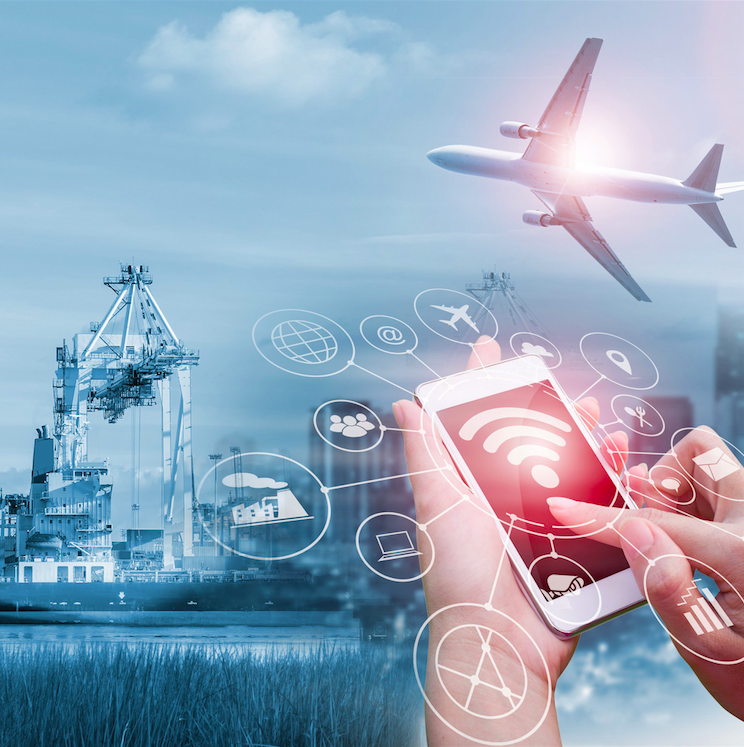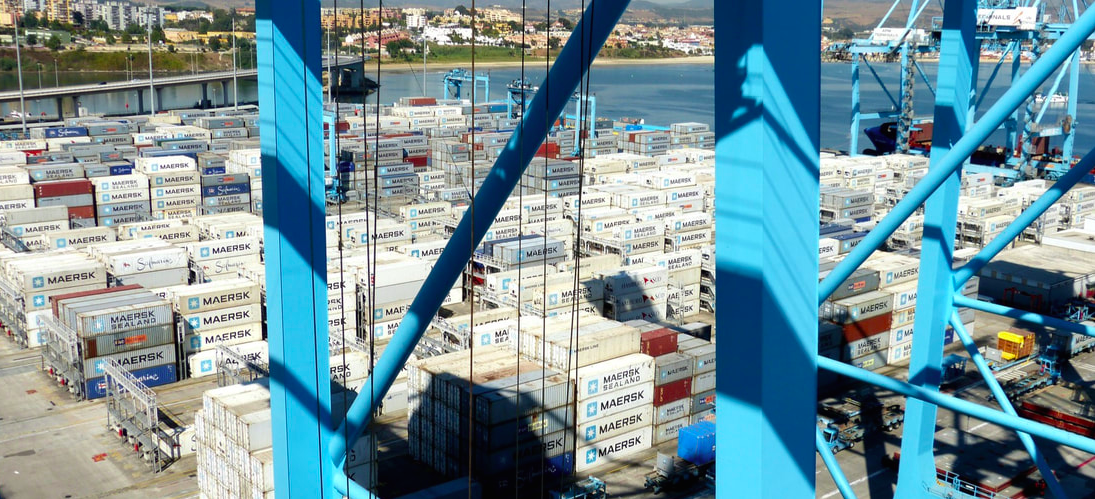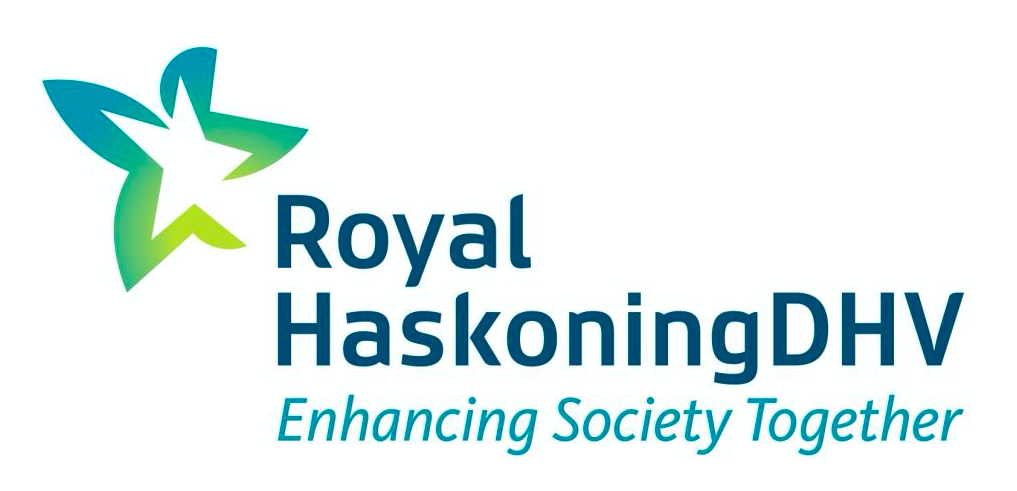Mar 22 - Marine Strategy Feature - Interview With Kris Kosmala
 By Paul Gonzalez-Morgan
By Paul Gonzalez-Morgan
Kris Kosmala is Director of Smart Port Operations Digital Solutions at Royal HaskoningDHV, an independent international engineering and project management consultancy dedicated to leading the way in sustainable development and innovation. Royal HaskoningDHV has over 6,000 employees based across 100 permanent offices in more than 30 countries on projects in some 150 countries. Kris is a recognised professional of applied technology in the area of transport of logistics, with an eye for optimisation and digitisation. As an experienced conference speaker, Kris travels the world talking about advanced innovation in the supply chain.
What would the ideal port ecosystem look like?
It would be always accessible for unloading/loading operations to vessels no matter if a vessel arrives on time or out of schedule. It would collect all the data from its grounds, machinery and people and determine right execution of its operations with minimal human intervention in the decision making process. It would process and expose information to port’s/terminal’s partners in the format that is useful to them, or ideally, directly to their own automated systems. It would be always self-improving by removing waste from its operations and achieving this by thorough use of and reliance on self-learning algorithms. It would operate with minimal impact on the environment surrounding the port. It would perform rain or shine producing the same, consistent in time and quality, output as expressed in time-to-complete cargo end-to-end (door-to-hold/hold-to-door) move.
What are the main challenges for ports when considering a digitisation project to transform the supply chain?
While the ports are at the intersection of maritime supply chains, those supply chains are not the only ones that the companies might be operating. Thus, we cannot really talk about transformation of the entire supply. The ports don't have a good sense of what needs to happen and when in each supply chain, relying on shipments arriving or departing on ships. The second problem is that ports face competition from carriers and freight forwarders who have the same desire of shaping and enhancing productivity of the supply chains of their customers. What the ports could definitely do is to work with the shippers/beneficial cargo owners (BCOs) to match data of shipment arrivals/departures with shippers’ transit time information or some other critical dates by when the shipment should arrive/leave the port. The data does not have to expose carrier or handler (freight forwarder) information, just the anonymised and aggregated data facts allowing shippers/BCOs to manage their own planning.
 Generally, what transformative IT solutions have the greatest impact on the company's "bottom line"?
Generally, what transformative IT solutions have the greatest impact on the company's "bottom line"?
There are two levers related to profit: increasing revenues and/or decreasing costs. Increasing revenues relates to better understanding of what port resources are valuable to carriers/logistics companies and differentiating pricing for those services based on typical and atypical scales.
This is called price discrimination and typical pricing schemes used across many industries leverage mathematics and statistics and are quite complex. Ports typically employ very simplistic price discrimination method, often based on the heuristic experience of their commercial managers. Instead, they should look at revenue optimisation tools that would be more efficient in uncovering revenue leakage and help the commercial team in carrier negotiations. The cost side is a bit more complex. Landside infrastructure represents long-term capital outlay both for the purchase and maintenance of the fixed and moving equipment. These big expenses don’t show up very often and it is pretty hard to save money on the initial purchase, but switching from predictive maintenance to prescriptive (condition-based) maintenance has proven to be a real money saver. Power consumption (electricity and equipment fuels) are another good area of spend optimisation. Advanced engine controls on moving equipment cut energy and/or fuel consumption, if supported by data analysis of the movements of the machines in relation to the tasks performed and, possibly, human driver behaviour. Another big area of savings is electricity used to light the terminals. Leveraging concepts from smart buildings, supported by their digital twins, allows differentiation of electric light intensity throughout granularly defined zones of the terminal area. The last area relates to cost of workforce. While workforce reduction may not be possible, better scheduling based on demand data analysis using machine learning has shown possible reduction in workforce costs of between 5-15% without actual reductions in workforce, often a very contentious area of negotiations between ports and labour unions.
 It appears that everyone has an idea of what a "smart port" should be however, is there a clear roadmap on how to get there?
It appears that everyone has an idea of what a "smart port" should be however, is there a clear roadmap on how to get there?
Hardly a detailed map exists and unfortunately, the ports were sold the story that only information technology and equipment automation projects make the port smart. It seems that every vendor of some form of automation or information technology has some idea of what the smart port could be, but that smartness is only limited to the actual area addressed by the solutions of that specific vendor. Ports don’t work like that. There are always knock on effects on areas/silos adjacent to the one being “smartened”. The projects done by IT departments could cause wobbles in operations, while operational improvements can cause disconnect with inflexible IT solutions. If there is a need to have an independent implementation party that holistically considers impacts of all changes and properly sequences implementations of agreed program of improvements, it is right here in the area of making the port smarter. That type of advisor can determine the trade-offs between technology and engineering solutions, be more precise about detailing the bottlenecks, understanding how solving one bottleneck may create another one upstream or downstream in the processes, and much less biased about which approach can allow faster extraction of the benefits, something that purveyors of automation and IT technologies might never be able to offer.
Please talk to us about the latest artificial intelligence (AI) trends and which applications you consider more practical:
AI is not one thing. Major branches of AI include machine learning from existing data, algorithm learning on its own (deep learning), natural language processing, and image classification. They are all useful to ports and terminals. Today, AI is used on land in container stack planning, equipment routing within port/terminal boundaries, ship-to-shore (STS) trolley movement management, container classification, berth allocation, mooring decisions support, and lighting management. On water, we use AI to recognise and instruct vessels’ movements, as well as, monitor vessel behaviour (a.k.a. surveillance). When it comes to deciding where it is most practical to apply AI, I always ask what the port is trying to change about itself. For example: do they want to be accessible to vessels? This area consists of preventing the need to drop anchors while waiting for berths, reducing the need for unnecessary vessel manoeuvers, getting the lines fast in the shortest time possible, and servicing the vessels in the shortest time possible. This calls for extensive use of AI to determine right timing and sequencing of the visits and then using mathematical optimisation to tune the allocations of necessary resources to achieve those expectations in real time.
What are the capabilities of predictive capacity AI?
AI, or specifically speaking machine learning branch off AI, has nothing to do with predicting anything. Predictive analysis uses the data that the company already has to predict data that the company does not yet have. In that sense, the predictive analysis does not predict anything. It simply applies theory of probabilities and statistics to derive what might happen, with the probability the analyst or planner suggests based on their human experience. Sound machine learning is predicated on detailed, reliable and cleansed data, something that many terminals or ports may not have. Thus, an off-hand answer could be “capabilities are unlimited”, yet reality of predictive analytics often fails to meet the expectations. I would recommend reaching out to experts and trialing predictive analytics in some areas of business planning where accuracy of the predictions could be easily compared with the actual results.
In your experience, where are the usual port terminal bottlenecks?
There are throughout. From mistiming operations and speed of STSs with availability of the ground equipment moving the cargo after/before STS; container stack disorganisation requiring more time to get the container from the stack onto the ground moving equipment; methods of transferring containers from the grounds onto the next mode (rail car, truck chassis, or barge); and traffic conflicts within the container grounds causing equipment movements that are not fluid. Last but not least are the scheduling conflicts between the equipment needed and the workforce that is required to operate it safely and consistently. Removing those bottlenecks may not only require assistance of advanced IT solutions, but also changes to operational processes and re-engineering the terminal's design.
Terminal operators have an operational and commercial drive whilst complying with customs regulations that at times can slow down the supply chain. How can digitisation & optimisation assist bridging this gap?
This is very hard. We can think of port community systems which inform all the parties touching the cargo where that cargo is and making sure it moves in correct sequence between those touchpoints. Ports and terminals can collect and distribute that information, but ultimately, the slowest touchpoint and its operator will determine the total time between the landing of the cargo and handoff to the shipper. Single window solutions integrated into the port community systems would have the highest impact making sure that documentation necessary for cargo to arrive/leave the port are electronically lined up and ready for actions at each touchpoint. Obviously, for automated operations using electronic documents we need all documents to be in digital form. Even one party insisting on using non-digital media will cause consistent delays to cargo processing. Mathematical optimisation will not play a significant role here, as a well implemented workflow system can handle the tasks of moving data and information in correct order between the touchpoints.
 What is the next technological disruptive idea that could impact shipping?
What is the next technological disruptive idea that could impact shipping?
All disruptive technologies of today, including blockchain, are really technologies of yesterday for which we finally found good use in shipping. Image recognition and classification used natively in terminal operating system (TOS) would have positive impact. Natural language processing would positively impact port customer services including communications with the vessels and with the operators of land transport modes. Last but not least intelligent robotics – land machines operating on the grounds of the terminals being able to communicate with each other and make decisions on work handoffs thus removing centralised optimisation would provide something really impactful, but that’s probably as far off as we need to sort out universal interfaces between AI’s implementations of various equipment vendors.
Is the future all about fully automated processes or will humans and manual labour still have a role to play?
Humans will play a role in terminal operations for yet long time. We have too many gaps between elements of all port & terminal processes that can be fully automated and made autonomous in their thinking and execution. Sometimes, fixing a problem or a bottleneck in terminal operation requires human ingenuity and situational awareness that is impossible to translate into an algorithm. I would expect the machines to fill all positions of decision advisors, sounding boards if you will, in situations in which the human beings would try to speculate a bit, or a lot. Call it by the old-fashioned term “decision support”, but we are not talking about a dashboard or a report tool, we are talking about the machine/robot being coordinated with the human and processing infinitely more information faster to derive the right answer, something that the human mind is not capable of achieving. That change in how the advice will be generated and given requires a different level of sophistication from the workforce co-habiting in the same workspace with machines. That in itself will be a big adjustment, something that the ports/terminals considering full automation have to plan ahead for.
For more news and features, visit: www.marinestrategy.com
{fcomment}






